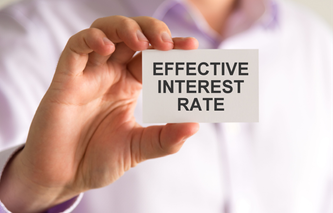Definition
The term compound interest is used to describe a calculation involving the application of a rate to both principal and interest that has been earned, but not yet paid or withdrawn. Compound interest would be equal to the growth of principal for two or more periods, if that growth is added back to the principal at the end of each period of time.
Calculation
Compound Interest = Principal x (1 + Rate / N)N x T
Where:
N = number of times the rate is compounded each time period
T = total number of time periods
R = rate expressed in decimal form
Explanation
Banks and other financial institutions pay interest to accountholders with money on deposit. The interest paid is a function of the amount of money on deposit (principal), the length of time it remains on deposit (time), and the rate of interest paid.
Simple interest is calculated at a point in time, and is applied only to the principal of the loan each time period. For example, a loan of $100 that charges a rate of interest of 10% per year would result in a simple interest charge of $10. Simple rates are normally used when the duration of the agreement is one year or less.
Compound interest typically applies in a business setting, where the term of the agreement is longer than one year. Compounding takes an interest rate and applies it multiple times in the same period. In doing so, it applies the interest rate to both the principal as well as the growth in principal. When compounding is applied, the effective rate of interest paid will always be higher than the simple interest rate.
This website has a compound interest calculator that applies the above concepts to interest rates and provides semi-annual, quarterly, monthly, weekly and daily results.
Example
Lindsey deposits $1,000 with a bank paying an interest rate of 10%, compounded semi-annually. At the end of one year, Lindsey's account balance would be:
$1,000 x 10% per year x 0.5 years, or $50.00 after 6 months
Plus:
$1,050 x 10% per year x 0.5 years, or $52.50
The total interest paid in this example would be $50.00 + $52.50, or $102.50. The same result is achieved by using the above formula, which includes both principal and interest:
= $1,000 x (1 + 0.10 / 2)2 = $1,000 x (1.05)2, or $1,102.50



